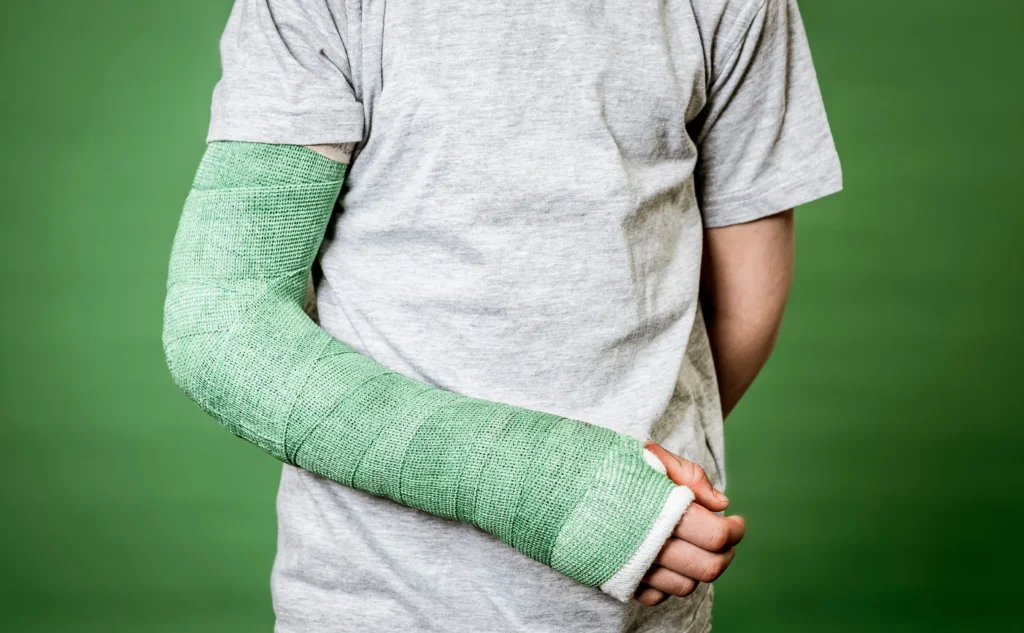When your child suffers an injury or is diagnosed with a condition that requires casting or bracing, it’s natural to have many questions. Understanding the differences, purposes, and care involved can help ease your concerns. This blog will guide you through the essentials of casting and bracing.
What Is The Difference Between Casting And Bracing?
Casting and bracing are both methods used to support and immobilize injured body parts, but they serve different purposes. Casting involves using a hard, usually plaster or fiberglass, mold to keep an injured area completely immobile. Bracing, on the other hand, typically uses softer, more flexible materials to support an injury while still allowing for some movement and adjustability.
What Types of Injuries Result in Casting?
Casting is typically used for injuries that need complete immobilization to heal properly. This includes:
- Broken bones (fractures)
- Severe sprains
- Post-surgical stabilization
Casts are made from materials like plaster or fiberglass and are designed to hold the injured area still, preventing any movement that could disrupt the healing process.
What Types of Injuries Result in Bracing?
Bracing is used for injuries or conditions that benefit from support but do not require complete immobilization. This includes:
- Mild to moderate sprains
- Strains
- Certain repetitive motion injuries
Braces can be made from various materials, including soft fabrics, hard plastics, and combinations thereof. They allow some movement while providing support and stability.
Bracing For Birth Defects
Certain birth defects, such as scoliosis, clubfoot, or cerebral palsy, may require prolonged bracing to address alignment issues, enhance function, and prevent further complications. For instance, in clubfoot treatment, the Ponseti method gradually corrects foot position over about six weeks, followed by the use of specially-designed shoes and braces to maintain correction until around age 4, primarily during nighttime and naptime. Similarly, in scoliosis management, bracing is frequently employed, particularly for progressive cases. Timely diagnosis is critical to minimizing the need for extensive bracing or enabling nighttime use only, highlighting the significance of prompt intervention and comprehensive care in ensuring children can lead active lives unhindered by musculoskeletal conditions.
Sizing
Proper sizing is crucial for braces to be effective and comfortable. Pediatric orthopedists or specialists often custom-fit braces for children, ensuring they provide the right amount of support and adjust as the child grows.
What To Expect When A Cast Comes Off
The removal of a cast is a significant milestone in the healing process. Here’s what you can expect:
- The skin under the cast may appear pale, dry, or scaly.
- There may be some muscle stiffness or weakness due to disuse.
- It’s normal for the limb to look smaller; muscle mass will rebuild with activity.
The removal process itself involves a small electrical saw, which operates via vibration, occasionally causing a tickling sensation. To mitigate the noise, some children opt for noise-canceling headphones. Once the cast is off, it’s time for post-removal care. This involves gentle washing with mild soap and water, refraining from scratching any itchy areas or picking at scabs, and moisturizing with hypoallergenic, fragrance-free lotion.
Following the orthopedist’s advice regarding exercises, stretching, or therapy is crucial for optimal healing and recovery.
Keeping A Cast Or Brace Clean
Maintaining cleanliness of a cast or brace is crucial to prevent infections and skin irritation. Here are some tips:
- Keep Dry: Avoid getting the cast or brace wet. Use a waterproof cover during baths or showers.
- Inspect Regularly: Check the skin around the cast or brace for any signs of irritation or infection.
- Follow Instructions: Follow the care instructions provided by your child’s healthcare provider to ensure proper hygiene and maintenance.
By staying informed and following these guidelines, you can help your child recover effectively from their injury and return to their daily activities with confidence.
When To See The Pediatric Orthopedic Center
If you suspect your child has an orthopedic injury or condition, contact The Pediatric Orthopedic Center at (973) 538-7700 or by filling out the request an appointment form. The Pediatric Orthopedic Center is the premier NJ hub for pediatric orthopedics, with three offices throughout northern NJ. Having been the leader in pediatric orthopedics in this area for over 30 years, we are the largest and most award-winning pediatric orthopedic practice in the tri-state area.



